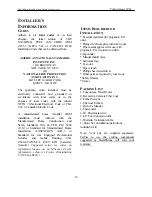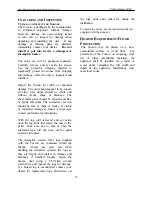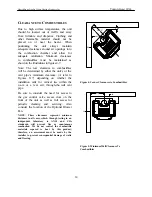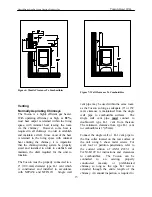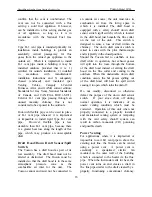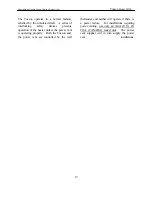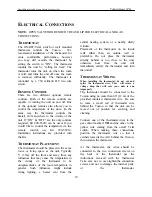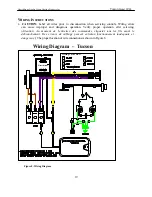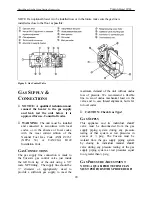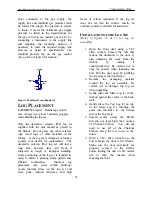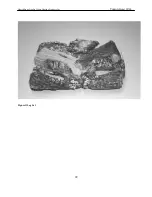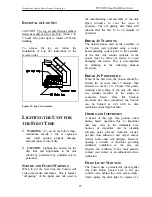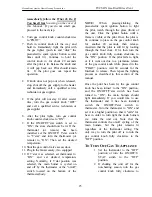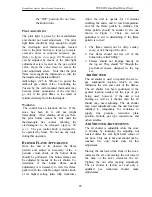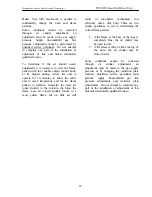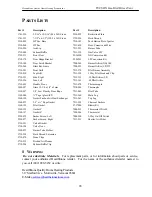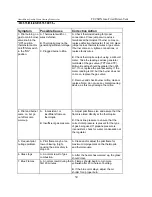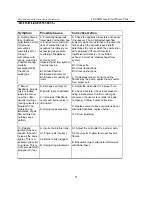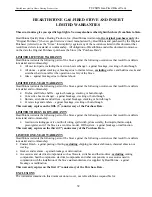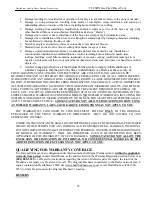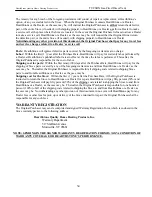
HearthStone Quality Home Heating Products Inc
TUCSON Gas-Fired Direct-Vent
26
the “OFF” position. Do not force
the knob to turn.
P
ILOT
A
DJUSTMENT
The pilot light is preset by the manufacturer
and should not need adjustment. The pilot
light flame should be large enough to engulf
the thermopile and thermocouple located
next to the pilot, but not so large as to create
excessive noise or consume excessive gas.
(Refer to figure 2 on page 10)
However, it
can be adjusted by means of the pilot light
adjustment screw located on the gas control
valve. Open the valve door to access the
pilot adjustment screw. Note that the pilot
flame must engulf the thermopile so that the
thermopile can generate sufficient
milli-voltage (325 to 500-mv) to power the
milli-volt gas control valve.. Controlling the
Tucson by the wall-mounted thermostat may
become erratic, nonexistent, or the unit may
go out, if the pilot flame is too small or
misdirected away from the thermopile.
W
ARNING
The control has an interlock device. If the
stove has been lit, it will not relight
immediately. After shutting off all gas flow,
the pilot burner cannot be relit until the
thermocouple has cooled, allowing the
electromagnet to be released
(Approx. 60
sec.)
. The gas control knob is designed to
be operated by hand. Do not use any tools
during this operation.
B
URNER
F
LAME
A
PPEARANCE
Once the unit is lit, observe the flame
pattern and adjust as necessary. Also, a
periodic visual check of the burner flame
should be performed. The burner flames can
be adjusted by means of the air shutter. To
determine if the burner flame needs
adjustment, it is necessary to view the flame
pattern with the variable output control knob
at its highest setting (turn fully clockwise).
Allow the unit to operate for 10 minutes
enabling the entire unit to reach temperature
and for the flame pattern to stabilize. The
flame pattern should be similar to the one
shown in Figure 3. There are several
guidelines to aid in determining if the flame
pattern is correct:
1. The flame should not be dirty, smoky,
sooty, or lick the top of the stove.
2. The flame should not rise off of the
burner tube, called “lifting”.
3. Flames should not impinge heavily on
the log set. They should “fit” through the
pre-formed spaces designed in the log
set.
A
IR
S
HUTTER
The air shutter is used to regulate the air-to-
gas combustion mixture, which in turn
influences the size and color of the flames.
The air shutter has been positioned in the
general location needed for the type of gas
being used, however, if the unit is not
burning as well as it should, then the air
shutter may need adjusting. The air shutter
may need adjustment once the unit has been
installed to compensate for variations in
supply line pressure, restriction plate
position, altitude, gas type conversions, and
other variables.
A
IR
S
HUTTER
A
DJUSTMENTS
The air shutter is adjustable while the stove
is burning by loosening the adjusting nut
located under the rear right hand corner of
the stove. This nut is hot and should not be
touched. Use only metal tools for this
adjustment.
Moving the nut toward the front of the stove
increases the air and moving the nut toward
the back of the stove decreases the air.
Tighten the nut after making adjustment.
The air shutter is factory set and only a
qualified gas technician should make
adjustments.

